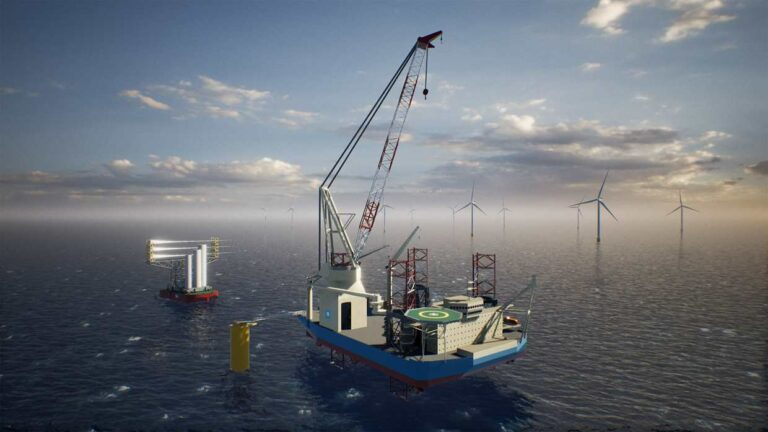
The WTIV is designed to remain in operation while feeder barges and tugboats transport turbine components from the marshalling hub to the installation site.
The new design will build on the same patent and characteristics of the current feeder concept, which was designed to operate in US waters.
This patented design will allow the jack-up WTIV to stay on location at the wind farm, while only tugs and barges sail back and forth from a port to collect the wind turbine components.
Maersk Supply Service said that this concept is cost-competitive and expected to be more than 30 per cent more efficient than conventional jack-up vessels.
This solution is also expected to be less weather-dependent, enabling continuous installations year-round.
”Europe is an attractive market for offshore wind, and we believe that our concept is also suitable for this region. As the Wind Installation Vessel itself does not sail into ports, this can solve some of the bottlenecks we currently see in Europe, where only a few ports are large enough to handle the growing wind turbine sizes. We look forward to collaborating with GustoMSC on getting this new basic design ready,” said the Chief Commercial Officer at Maersk Supply Service, Jonas Munch Agerskov.
Maersk Supply Service and GuscoMSC will start the basic design process shortly and expect to conclude it later in 2023.
”As GustoMSC, a subsidiary of NOV, we look forward to working with the Maersk Supply Service team on a next generation wind turbine installation jack-up for the international market. Having a decades long history of working together, both companies will combine their years of offshore experience and design know-how in this collaboration. Against the backdrop of growing turbine sizes, we jointly aim to further improve installation efficiencies and development economics in the bottom-fixed offshore wind market,” said Managing Director GustoMSC, Nils van Nood.
Back in March, A.P. Møller Holding has entered into an agreement to acquire Maersk Supply Service from A.P Møller – Mærsk, with the aim of establishing a leading offshore marine company servicing the offshore wind industry.
The transaction is subject to certain customary regulatory approval and is expected to close in the second quarter of 2023.
The transaction includes the wind installation vessel currently under construction in Singapore.